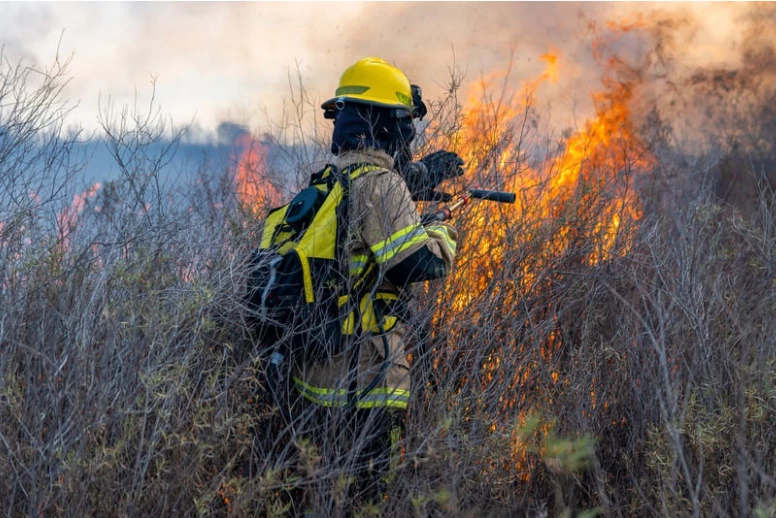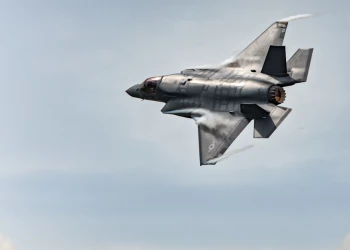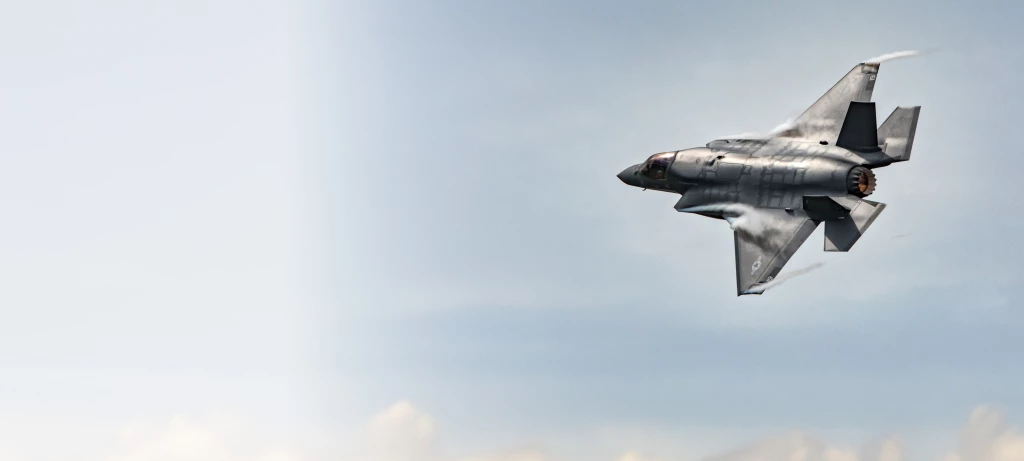Tracking 2024 Updates to the Air Force’s Collaborative Combat Aircraft
Add bookmark
The Air Force’s Collaborative Combat Aircraft (CCA) is the air branch’s ongoing effort to develop a new type of semi-autonomous, unmanned aerial vehicle (UAV). These jet-powered UAVs are designed to operate as "loyal wingmen" alongside crewed fighter jets, capable of flying independently or in small groups. Equipped with artificial intelligence, CCAs can collaborate with and take direction from human pilots, enabling them to perform a range of missions such as air-to-air combat, air-to-ground combat, electronic warfare, targeting, and intelligence, surveillance, and reconnaissance (ISR).
Part of the Air Force’s Next-Generation Air Dominance (NGAD) initiative, CCAs aim to expand the fighter fleet, protect human pilots, and reduce costs compared to traditional fighter jets. The Air Force has planned for 1,000 CCAs, supporting its advanced fighters at a ratio of two CCAs per fighter. These aircraft align with the agile combat employment (ACE) strategy, which emphasizes dispersed operations, enhancing the U.S. military’s ability to counter advanced threats like China’s anti-access/area-denial (A2/AD) capabilities.
2024 provided several notable updates to CCA. This article will track those updates and provide a look at what 2025 might bring for the unmanned combat aircraft.
Air Force Awards Initial CCA Contracts to Industry Partners
In what has been a whirlwind year for NGAD, CCA continued to see noteworthy progress. The first news of the year broke on January 24 when the Air Force announced five companies had been awarded contracts to design and build CCA. Those companies include: Boeing, Lockheed Martin, Northrup Gruman, Anduril, and General Atomics.
In April, the Air Force narrowed down the number of companies involved with designing and building CCA from five to two. General Atomics and Anduril received funding for detailed designs, manufacture, and testing of production representative test vehicles for the CCA fleet. According to Air Force Secretary Frank Kendall, the Air Force anticipates ordering 100 CCAs over the next 5 years as part of Increment 1 of the program.
The following are disclosed details of the CCA each contractor is developing for Increment 1:
Anduril - In September 2023, Anduril acquired Blue Force Technologies, a North Carolina-based company that had developed the Fury, a large uncrewed aircraft. Anduril announced plans to enhance Fury into a “high-performance, multi-mission” platform capable of serving as a Collaborative Combat Aircraft (CCA). Additionally, Anduril produces Lattice, an open systems software designed for multi-sensor and multi-domain command and control. The company has stated its intention to integrate Lattice software with the Fury platform.
General Atomics - General Atomics Aeronautical Systems, Inc. (GA-ASI) has based its CCA proposal on the experimental XQ-67A platform, prioritizing endurance over speed and maneuverability. The XQ-67A completed its first flight on February 28, 2024. As of June 2024, a GA-ASI official confirmed during a podcast that production of the company’s first CCA is underway. General Atomics plans to fly its first prototype of the XQ-67A by mid-2025.
The announcement does not prohibit Boeing, Lockheed Martin or Northrup Gruman from continuing to develop an unmanned combat aircraft. In fact, they could still be eligible for future contracts as part of Increment 1, but in the meantime, those companies will have to foot the bill for any CCA work.
The Air Force is planning to make a final competitive production decision on Increment 1 of CCA in FY 2026, and expects to field a fully operational capability by the end of the decade.
What’s Next for CCA in 2025
As of December 10, the Air Force is planning to set the requirements for Increment 2 of CCA once new Air Force leadership has been appointed by the Trump administration and confirmed by Congress.
Service acquisition executive Andrew Hunter emphasized that the Air Force has yet to finalize requirements for this next phase, leaving open questions about payloads, capabilities, and affordability. Increment 2, originally envisioned as a more advanced platform with enhanced stealth, is now being reconsidered, with an eye toward balancing capability with cost-effectiveness.
“We do have some ideas of how we would see Increment 2 fitting into the broader Air Force force design, and that will help shape that dialog with industry,” Hunter said. “We’ll work closely with industry in doing that work, because I think different companies may well have different concepts. Some will prove to be more advantageous and more innovative than others, and then we can start to hone in on exactly what does Increment 2 look like. So … still a lot to be determined in that process.”
Progress has been further delayed further after the National Defense Authorization Act (NDAA) was passed. In December, Congress passed this year's NDAA, although, the legislation was unclear on specific appropriations towards future CCA funds. The incoming administration will make the ultimate determination on the specifics of any future CCA or NGAD funding in the coming months.
While the Air Force had planned to outline its preferred approach for Increment 2 by the end of this year, those timelines have shifted. In the interim, the Air Force continues to collaborate with industry partners and explore force mix scenarios through wargaming. Recent simulations suggest that larger quantities of affordable CCAs may better meet operational needs than smaller fleets of highly advanced systems.
The CCA program’s iterative approach ensures sustained competition, with Increment 2 offering a fresh opportunity for vendors to refine their designs. Meanwhile, Increment 3 remains on the horizon, with potential for international collaboration, but specific details are yet to emerge.
If you are interested in hearing from Air Force leaders, such as John Bailey from the CCA Agile Development Office, in person, be sure to register for IDGA’s Air Dominance Summit this May 13-14 in Nevada. This two-day event will bring together leaders from across the defense and aerospace communities, including the US Air Force, the US Navy, allied nations, industry, and academia, to build on last year’s conference discussions. We will not only discuss Collaborative Combat Aircraft, but also other sixth-generation fighter programs, including the Air Force's NGAD, the Navy's FAXX, and international programs like FCAS and GCAP. We will also cover sustainment of current systems including the F-35, reflect on current conflicts, and explore innovation in air supremacy.
























